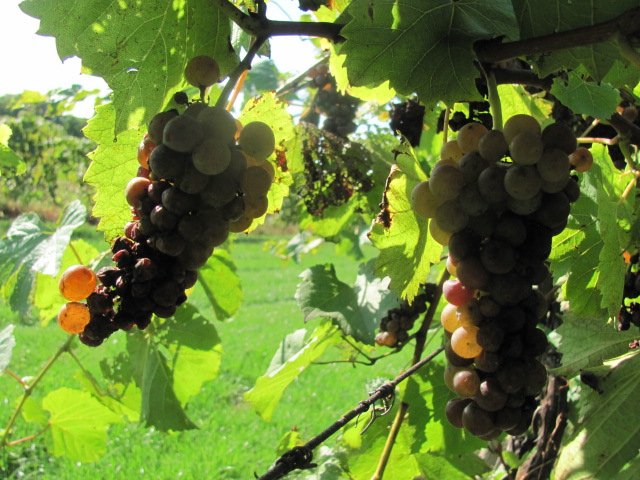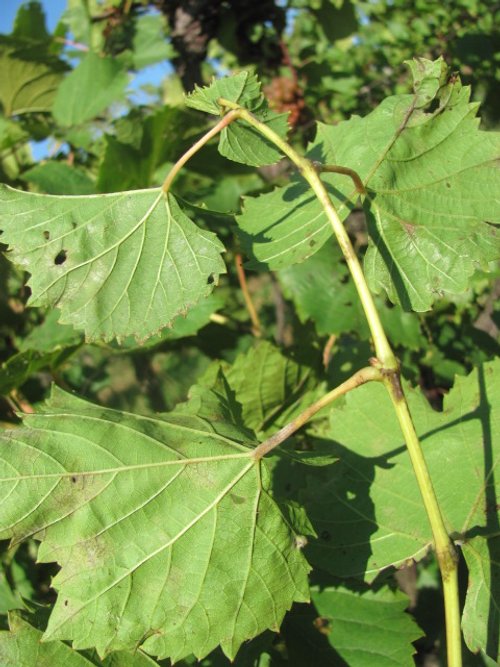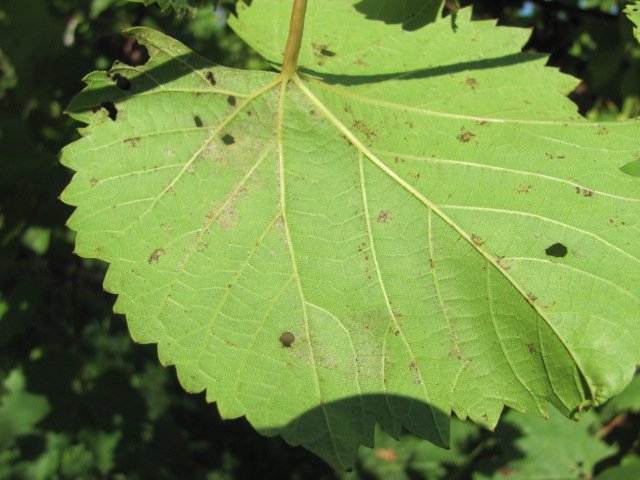AGROSHIELD’S ALL-NATURAL BACILIFOL™ INCREASES THE EFFECTIVENESS OF FUNGICIDES AGAINST BOTRYTIS AND DOWNY MILDEW ON GRAPE PLANTS
This past fall, AgroShield worked with BAAR Scientific to conduct a trial for our All-Natural Bacilifol product on grape plants. In late August, we interviewed Dr. Chris Becker, President of BAAR Scientific LLC, to discuss Agroshield’s Bacilifol product and how it’s being used as a foliar spray to treat botrytis and downy mildew in vignole grapes. During that interview, the grapes hadn’t experienced veraison and it was too early to discern how Bacilifol had affected the plants. In previous trials, Bacilifol-treated plants exhibited significantly better results than the control group and this trial was no exception. With the trial now completed, we circled back with Dr. Becker to discuss the scope of the trial, the conditions for treatment, and his findings.
BACILIFOL ON BOTRYTIS
Before diving into the specifics of the trial, Dr. Becker described botrytis and how it generally affects the vignole grape variety.
“Basically, botrytis is a fungus that gets into certain varieties of grapes. I mean, it gets into all vinifera grapes, and then always some of the French hybrids. We conducted a trial on a variety called vignoles, which is a French hybrid that happens to be very susceptible to botrytis. So botrytis actually gets in rather early in the season, and it just hangs out on the flower parts within the cluster. And then, after what we call veraison, in mid-August when berries get up to about 15% Sugar, they naturally start to soften. Then botrytis, on those early flower parts, can take off without fungicides when there's plenty of moisture.”
With this in mind, it’s important to note the environmental conditions of the trial.
“This year, we had quite an abundance of moisture just in that stage right after veraison, from August 15 through, you know, the first week in September. So this was a year that was very favorable for botrytis. Growers of vinifera and varieties like vignoles were making fungicide applications no more than every 10 days.”
Despite these botrytis-favoring conditions, Bacilfiol-treated grape plants exhibited remarkable results.
“In this trial, we ended up with the non-treated clusters at 49% with botrytis— which we call a severity cluster area. So, almost half of the grapes are lost due to botrytis.
And then in this trial, we looked at one and two pounds of Bacilifol. And basically those treatments, it didn't matter if it was one or two pounds, cut the severity of botrytis in half.
I think for a biological, I would say that’s a very good result by itself; especially when we looked at Bacilifol alternated with this botrytis-specific product called Elevate (in which fenhexamid is the active ingredient).
In that case, we had only 23% botrytis, which is still rather high—That indicates the severity of the season.
So, if we had control, that actually was not significantly different and almost in the ballpark. This is another hats off or I'd say a successful evaluation of Bacilifol for botrytis, given that A) we cut botrytis in half compared to the untreated in a severe year. And then B) if we had alternated Bacilifol with a botrytis specialist, there was a little more control of botrytis, but not appreciably or significantly different from bacilifol alone.
So the fact that we cut the disease rate in half, I'd say, that was better than what I would expect from some of the other commercial bacillus-type products.”
BACILIFOL ON DOWNY MILDEW
The other facet of this trial focused on Bacilifol as a combatant for downy mildew on vignoles. In contrast with botrytis, downy mildew occurs on the leaves later in the growing season. Dr. Becker explained how the high levels of moisture influenced downy mildew growth during the trial.
“It was also a severe year for downy mildew, given all the rain we had from August through early September. And there, the rating was that fully 20% of the non-treated leaves had Downy Mildew symptoms.
Then there was a slight rate effect from one to two pounds (of Bacilifol), where we cut that to 14% and 12%. So, it wasn't quite as much as half, but I know downy mildew is a tougher disease to control, especially with biologicals.
So yes, we cut it down, but when we alternated with a downy mildew specialist called Ranman, (something called cyazofamid that’s very good against downy mildew), we cut that down to 5%.
That was a very acceptable number because if you only have 5% of the leaf area with downy mildew, those leaves will stay on. While the rates, or the disease amounts, on the Bacilifol are untreated, you know, those leaves are going to start falling off in a week or so after.”
By alternating Bacilifol with a specialist, the vignoles experienced significantly lower rates of downy mildew while reducing the amount of fungicide usage. In all, the trial proved that Bacilifol increases the effectiveness of fungicide applications against botrytis as well as downy mildew—yielding longer-term efficiency, longer effectiveness, longer utility, and an extended mode of action. In addition to the impressive results, Dr. Becker remarked on the convenience of Bacilifol during the trial.
“Overall, Bacilifol went into solution just fine, and being a powder or very small pellet, or granule it was easy to store and easy to weigh in mix.”
If you are interested in a product sample or learning more about Bacilifol and the benefits it can provide, please visit www.agro-shield.com or call +1 (716) 913-6507 to speak to an expert.

















